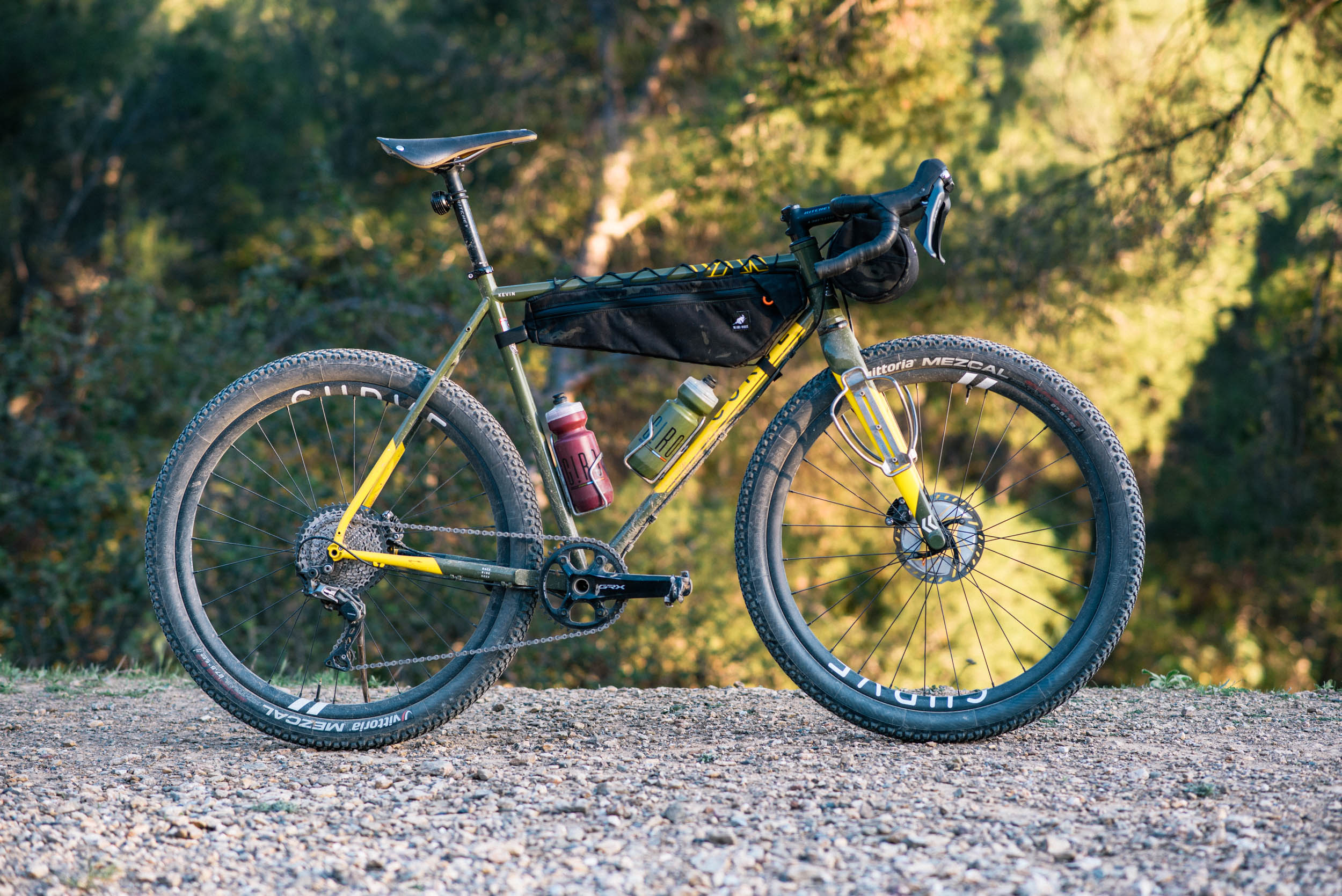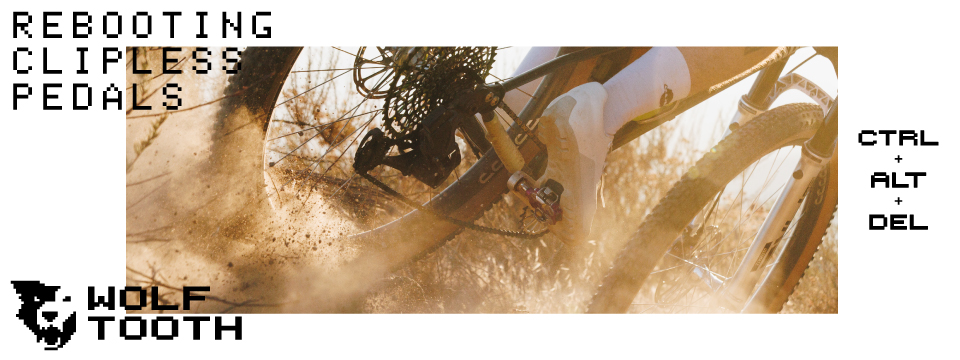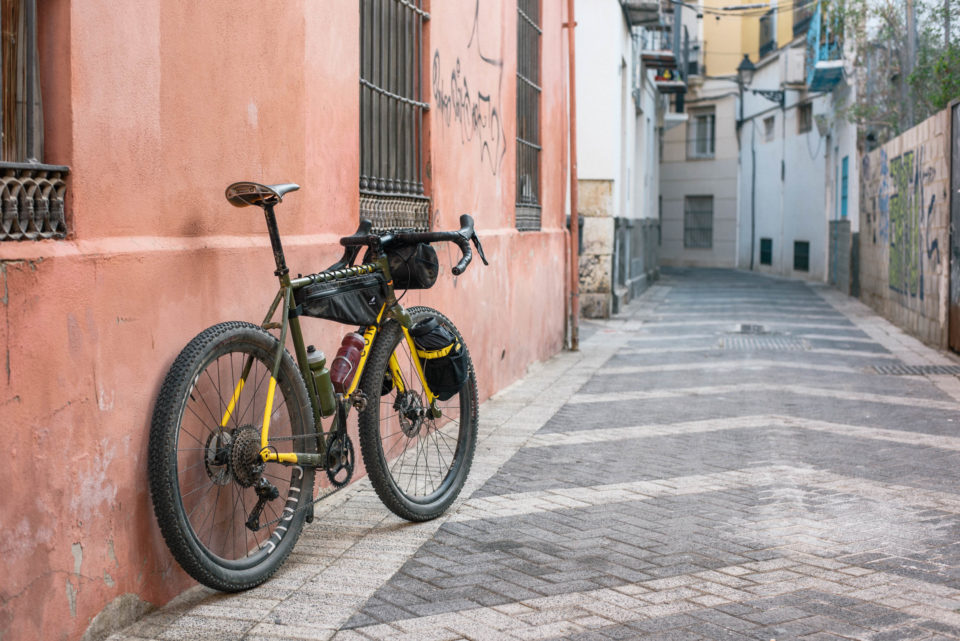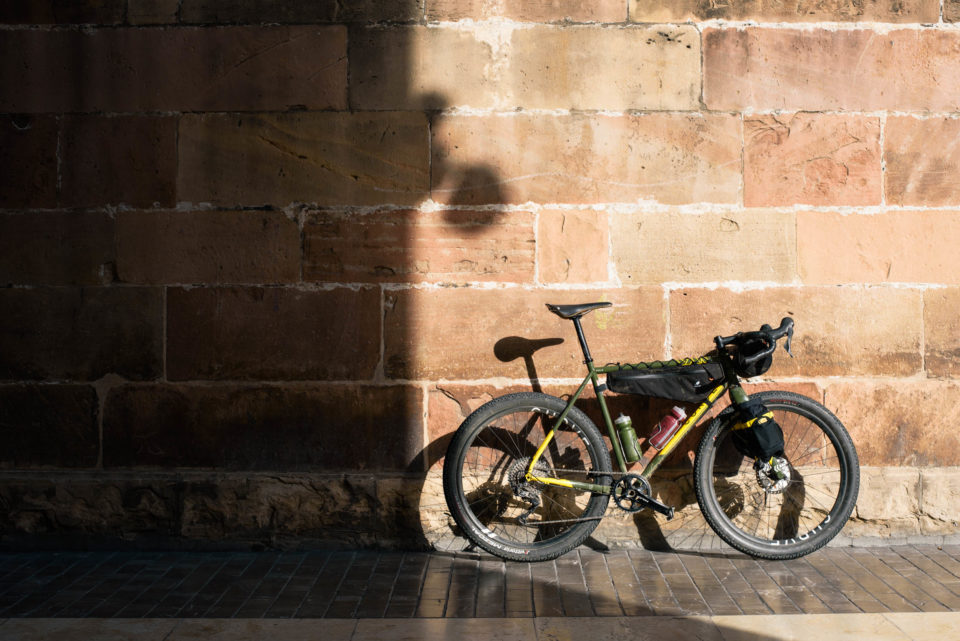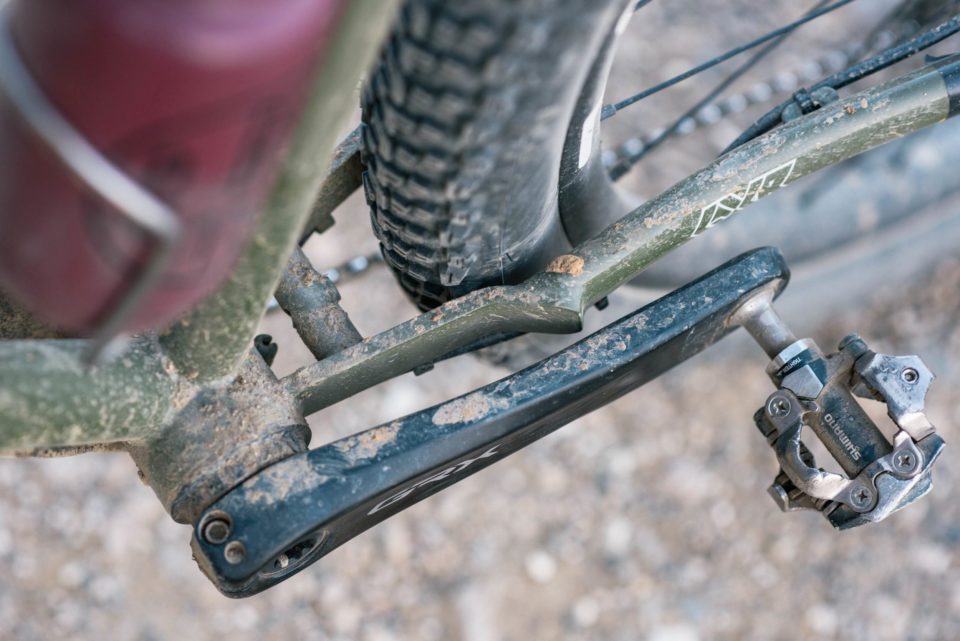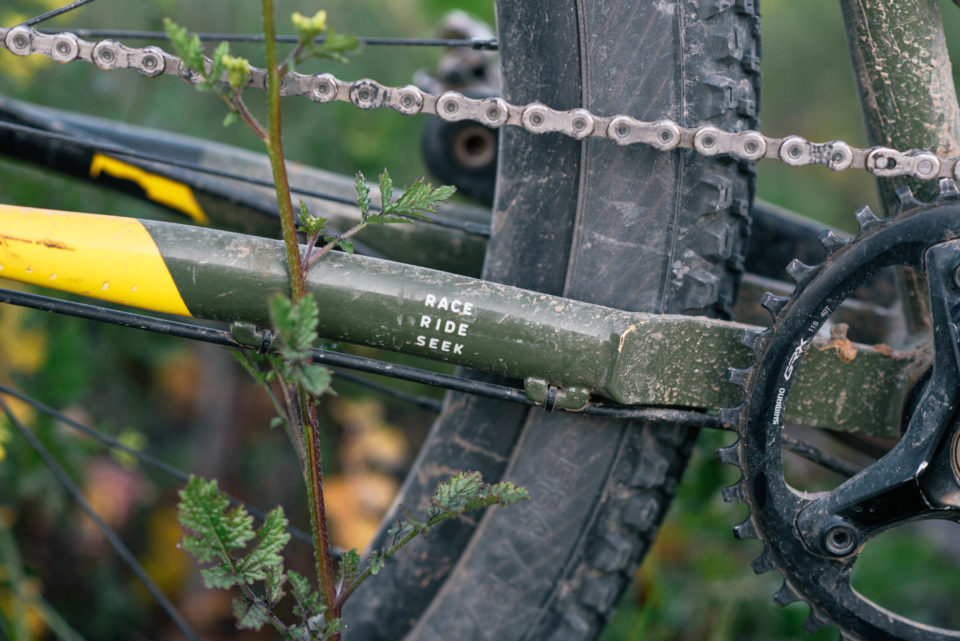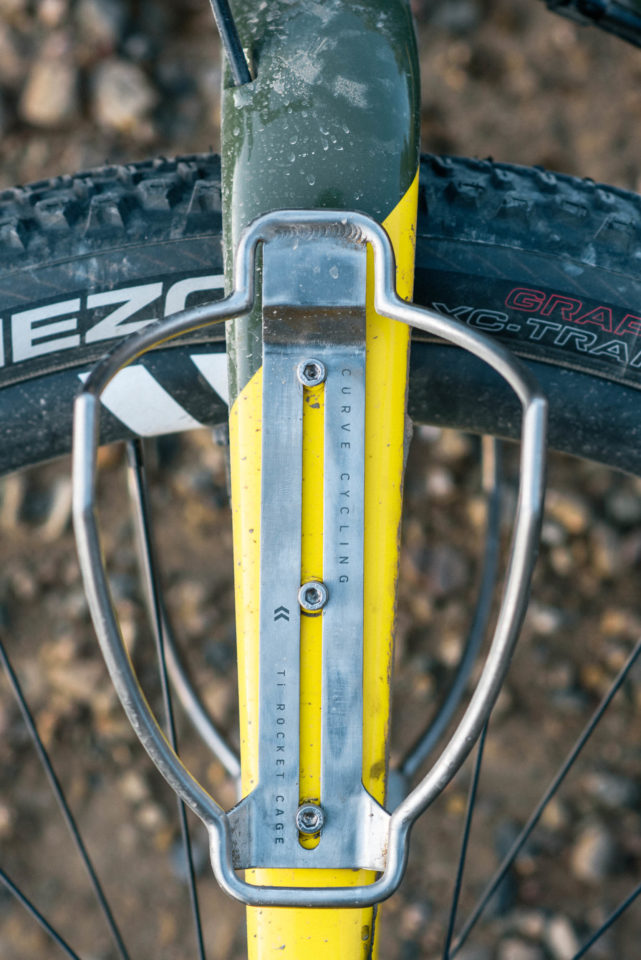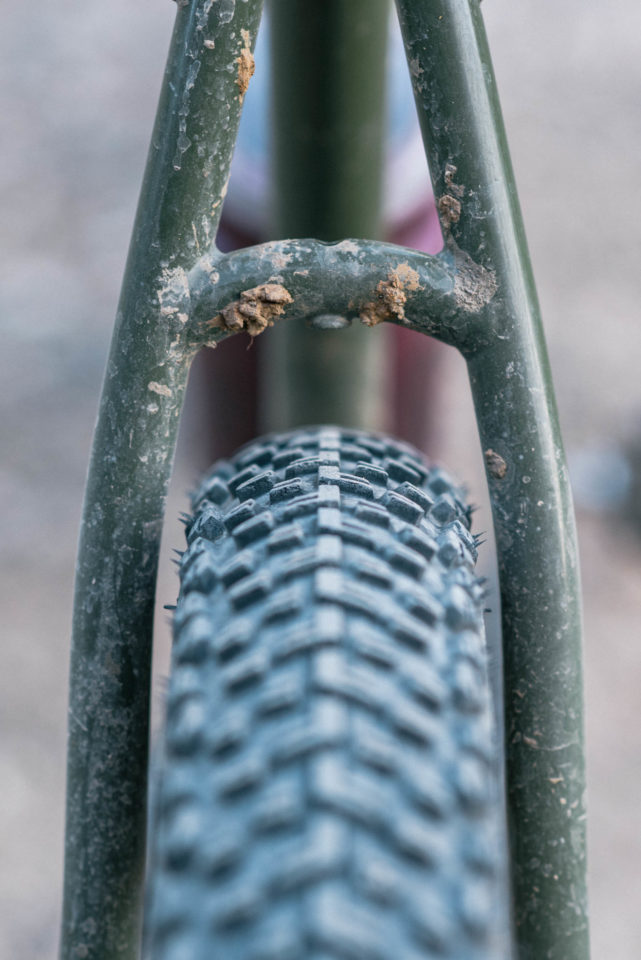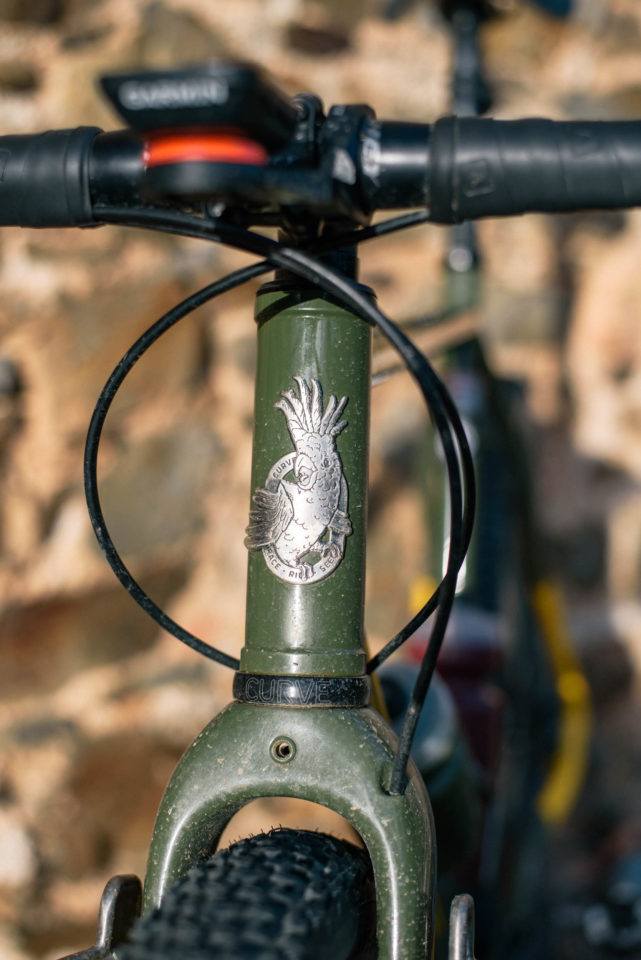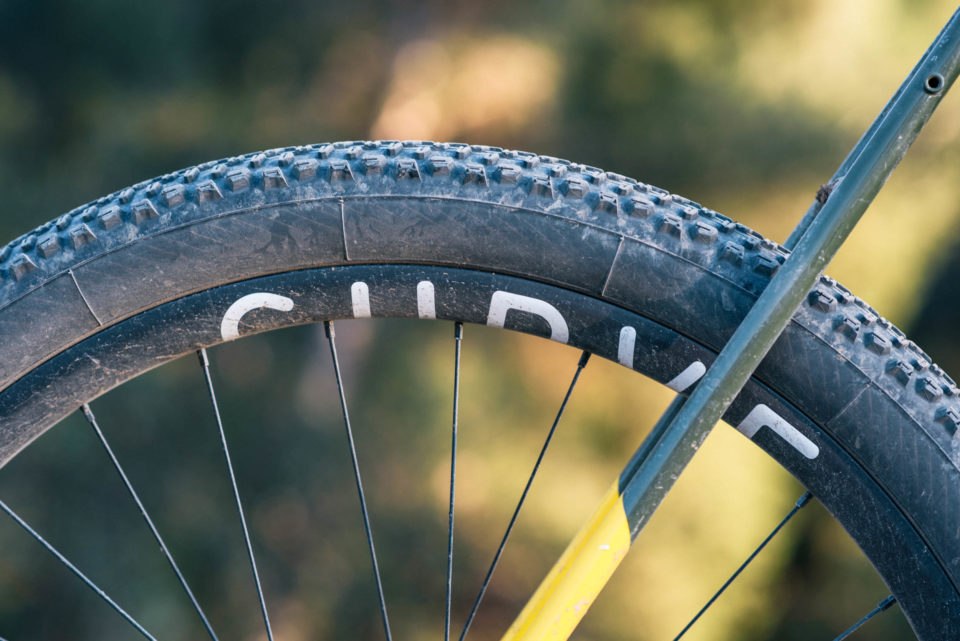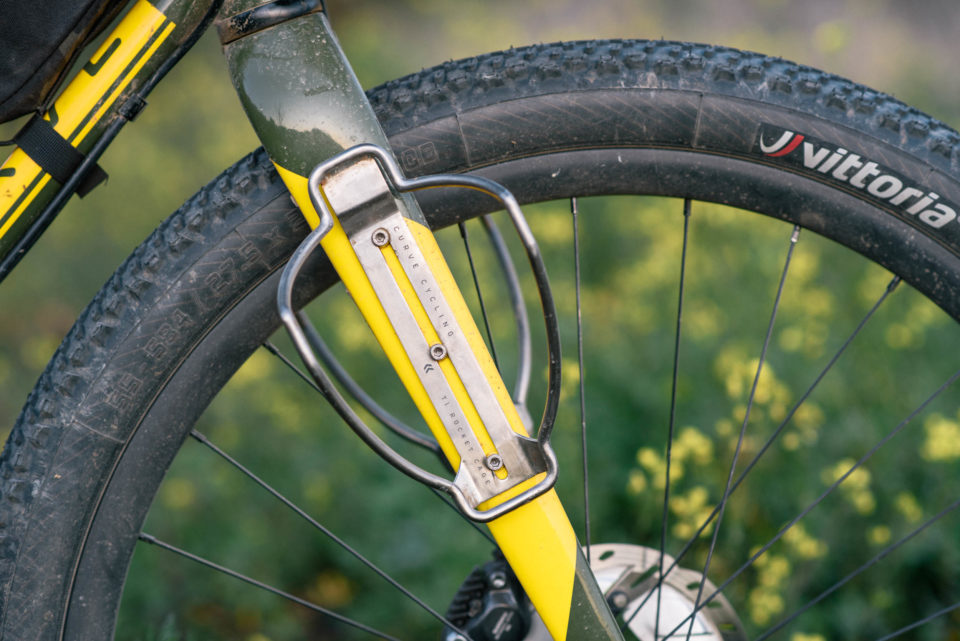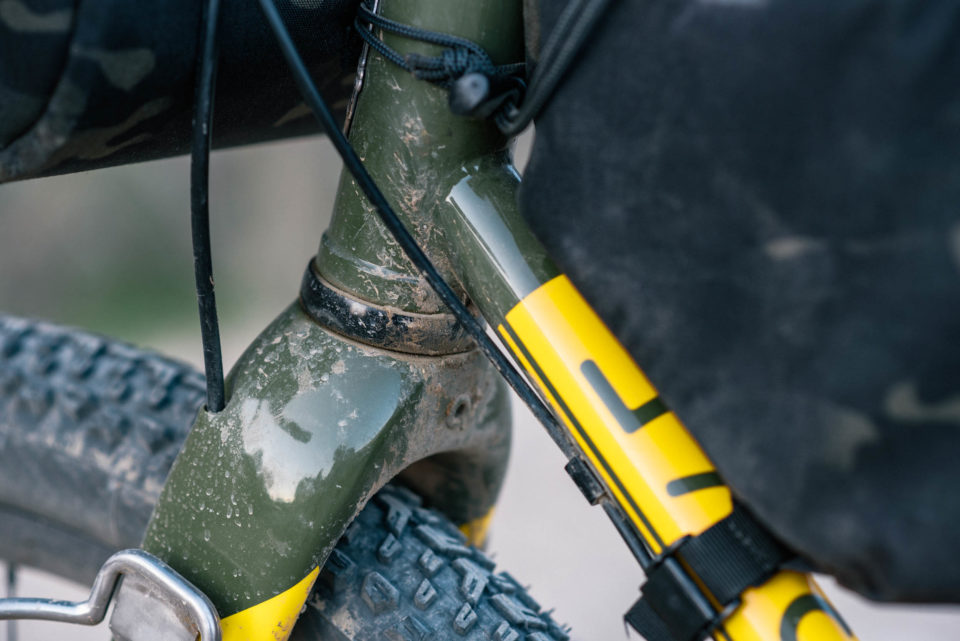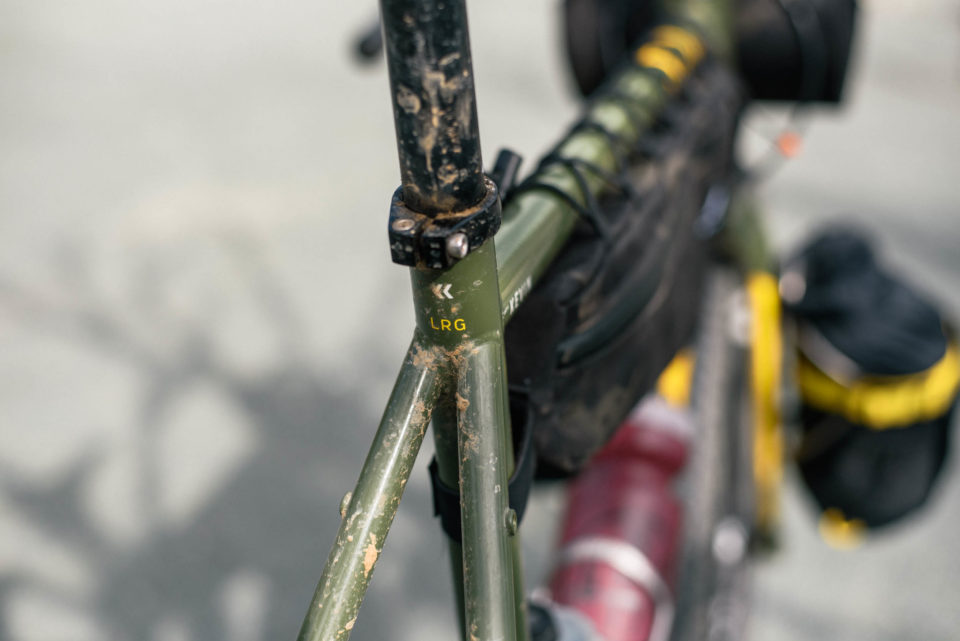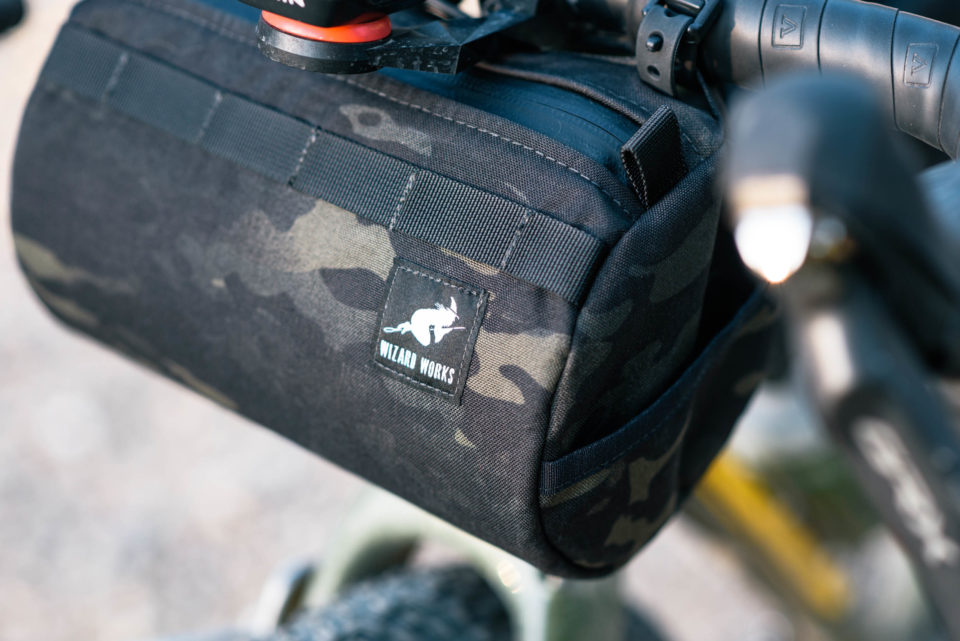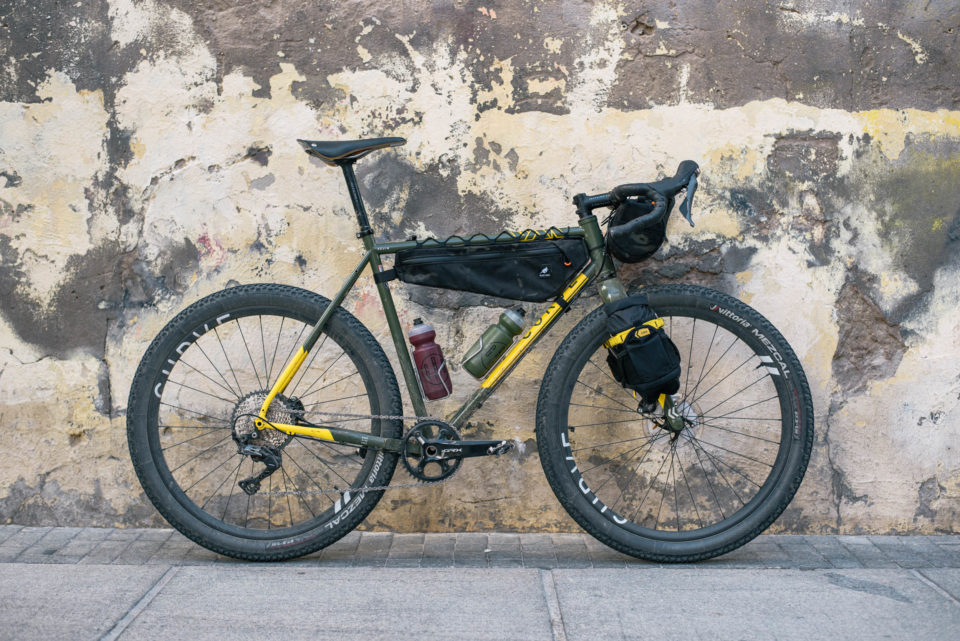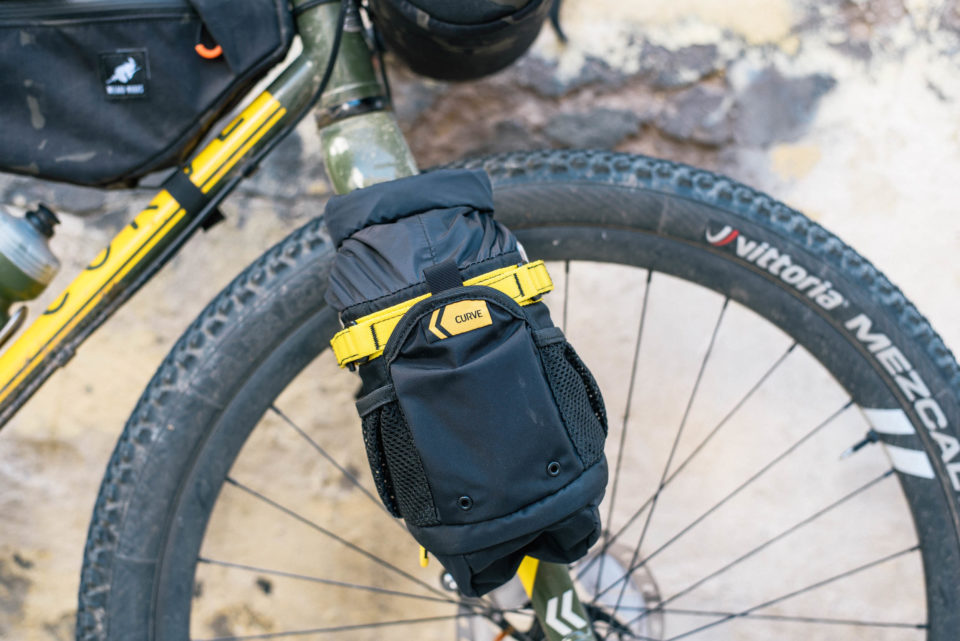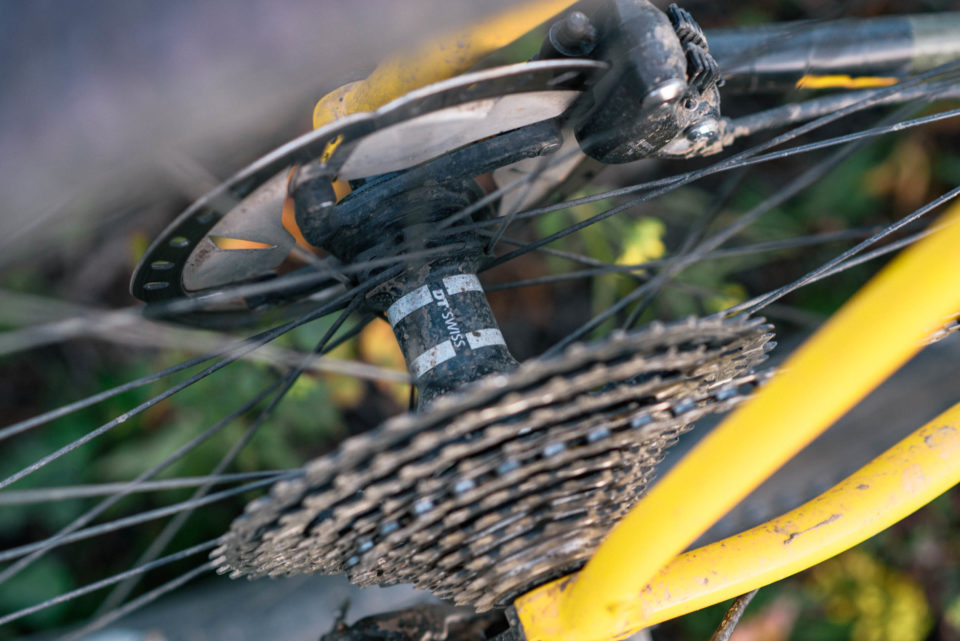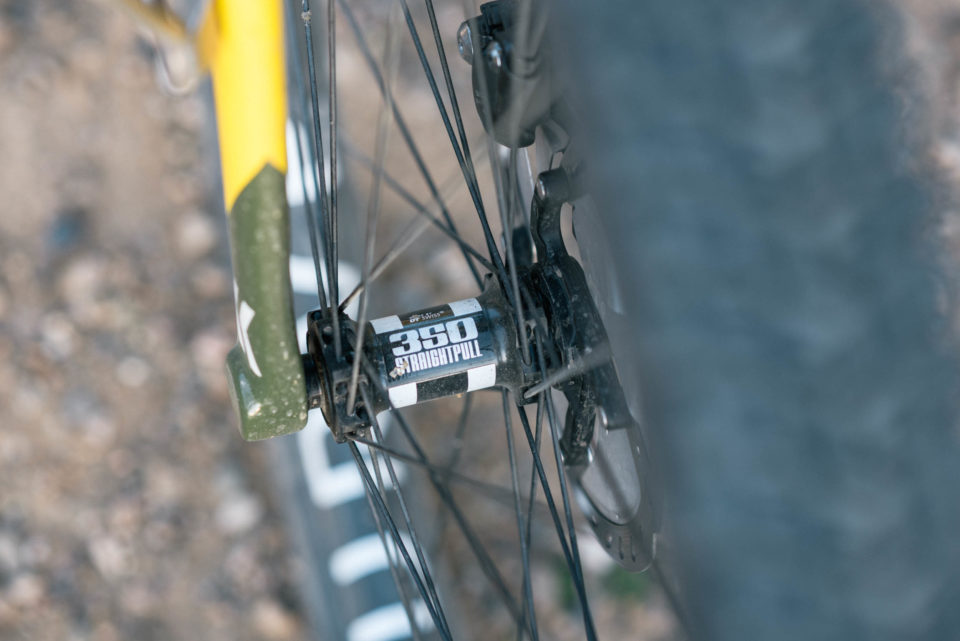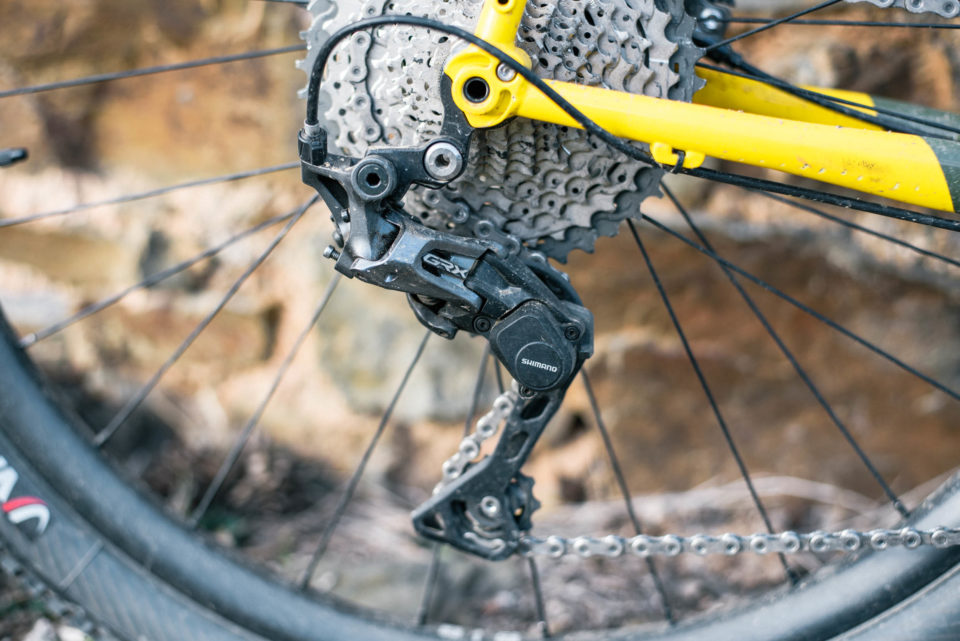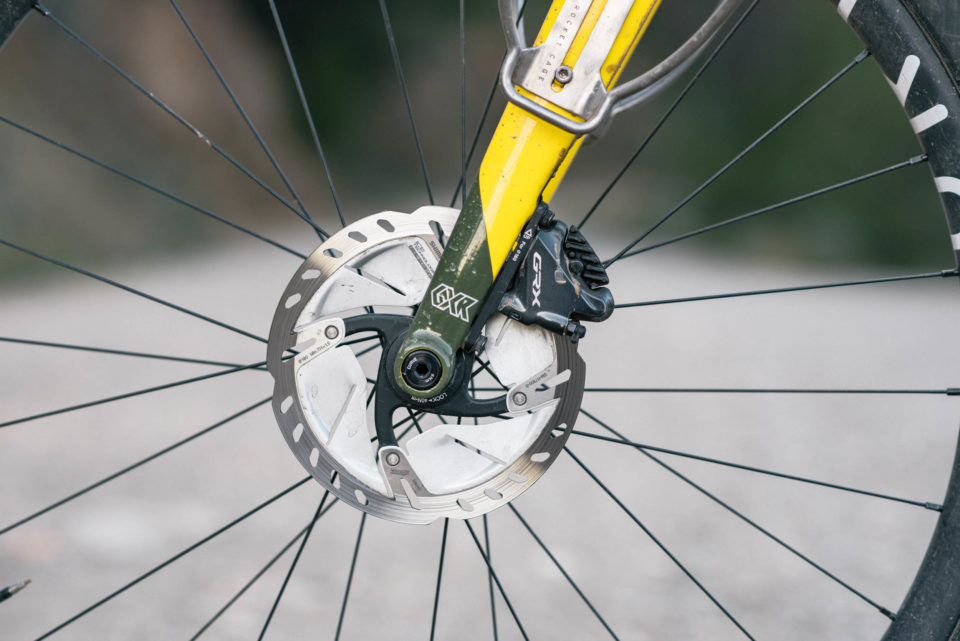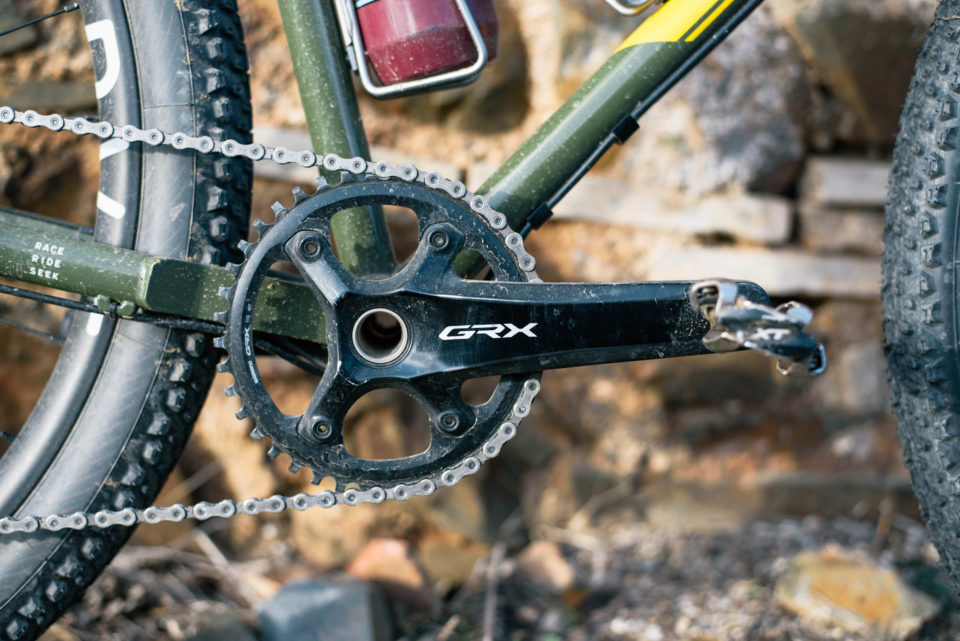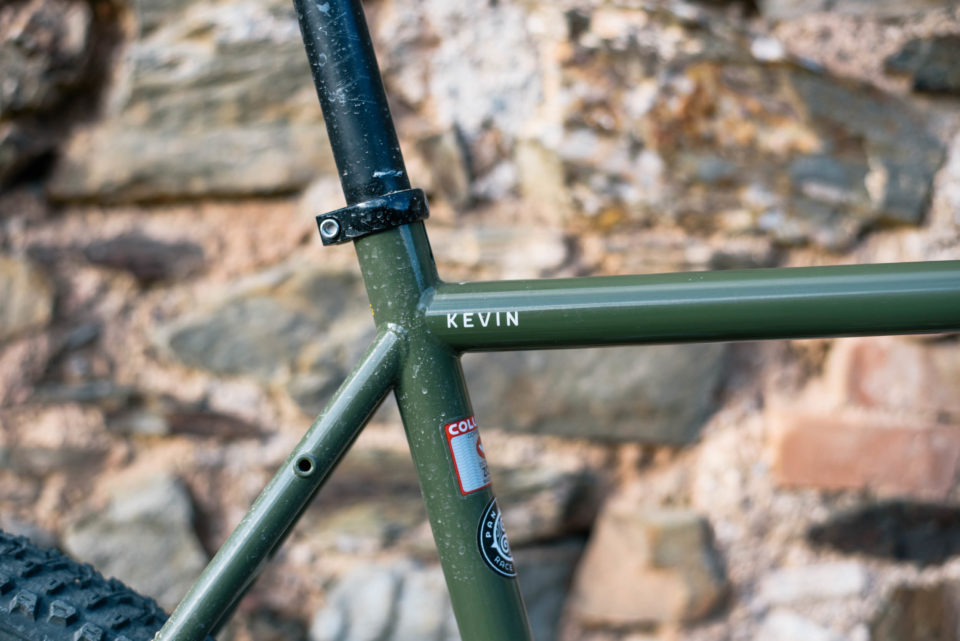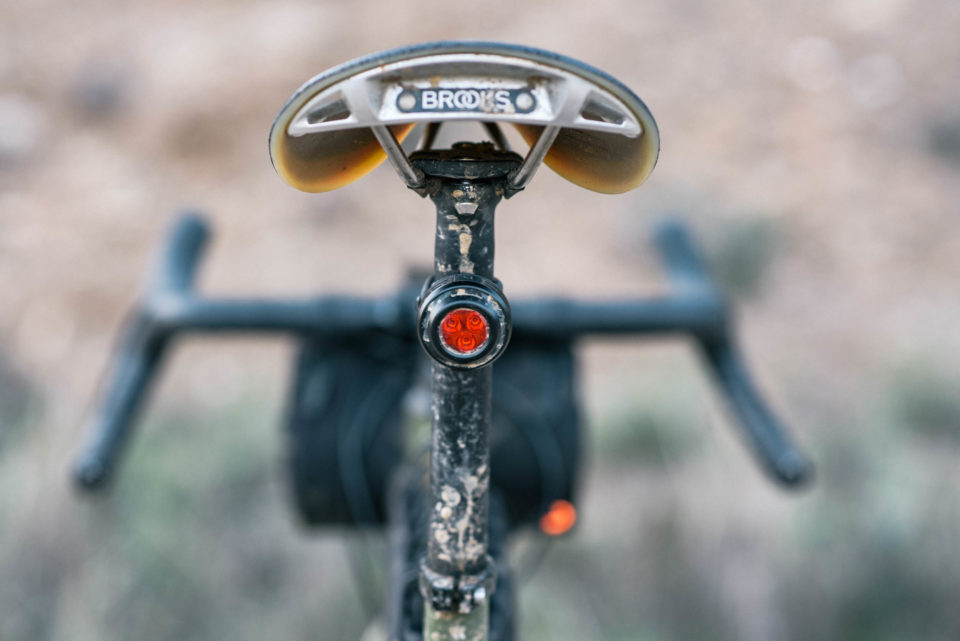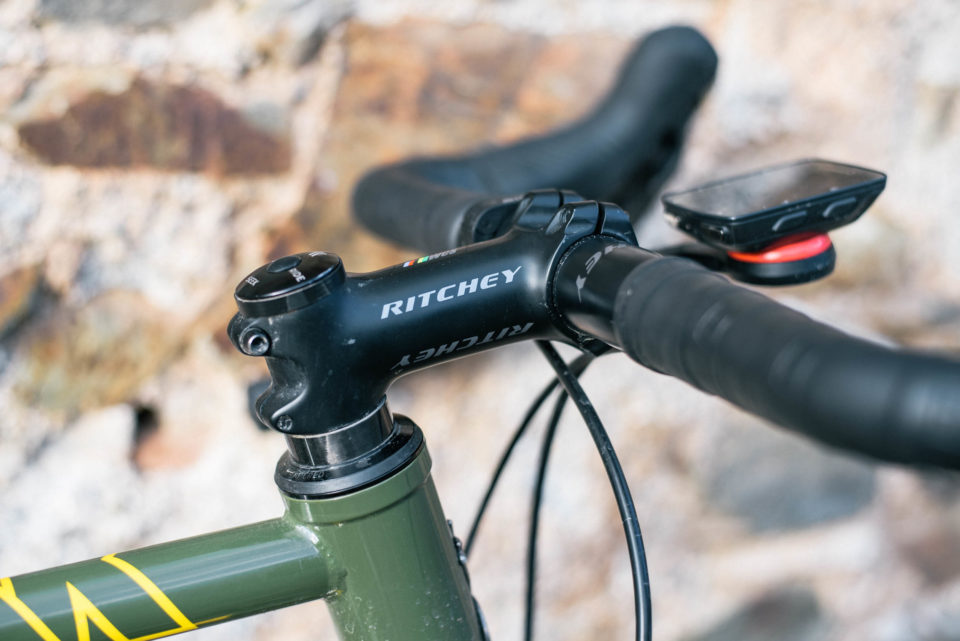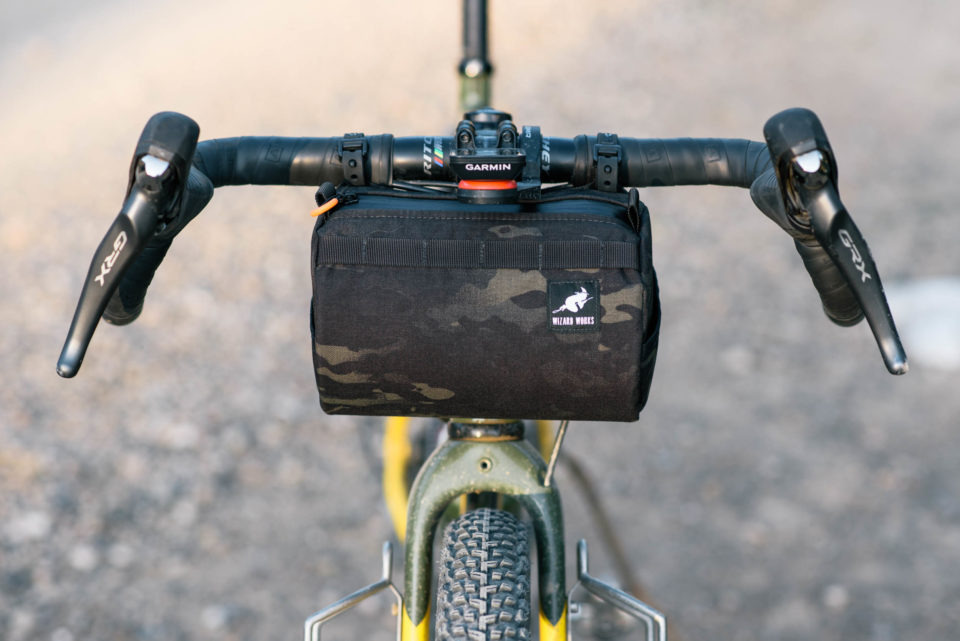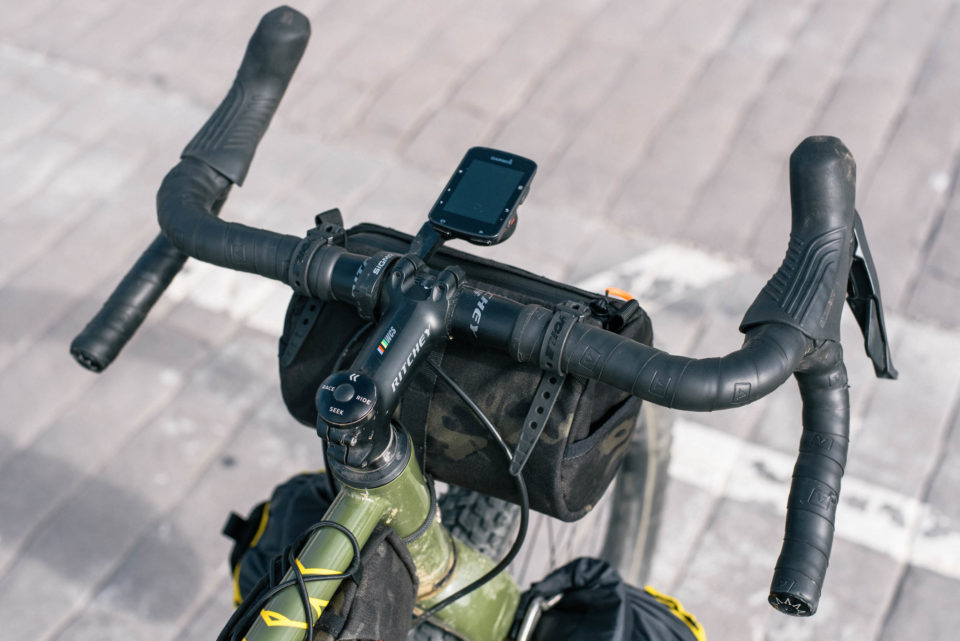Curve Kevin of Steel Review
Despite being a small brand, Melbourne-based Curve Cycling has built quite a reputation for their range of unique adventure-focused bikes. Lucas spent six weeks riding their Kevin of Steel around sunny southern Spain over the winter for this full review. Find his thoughts and lots of photos here…
PUBLISHED Jun 26, 2020
In my ongoing mission to avoid winter—now three years running—I spent most of this January and February living in beautiful southern Spain, based in the Andalusian port city of Málaga. My pre-trip research indicated that the amount of incredible mixed-terrain riding just a short spin from the city center might almost be too good to be true. Upon arrival, it only took one quick scouting ride out to a pin I’d dropped in Google Maps to confirm that I’d be in for one of my best months of riding ever.
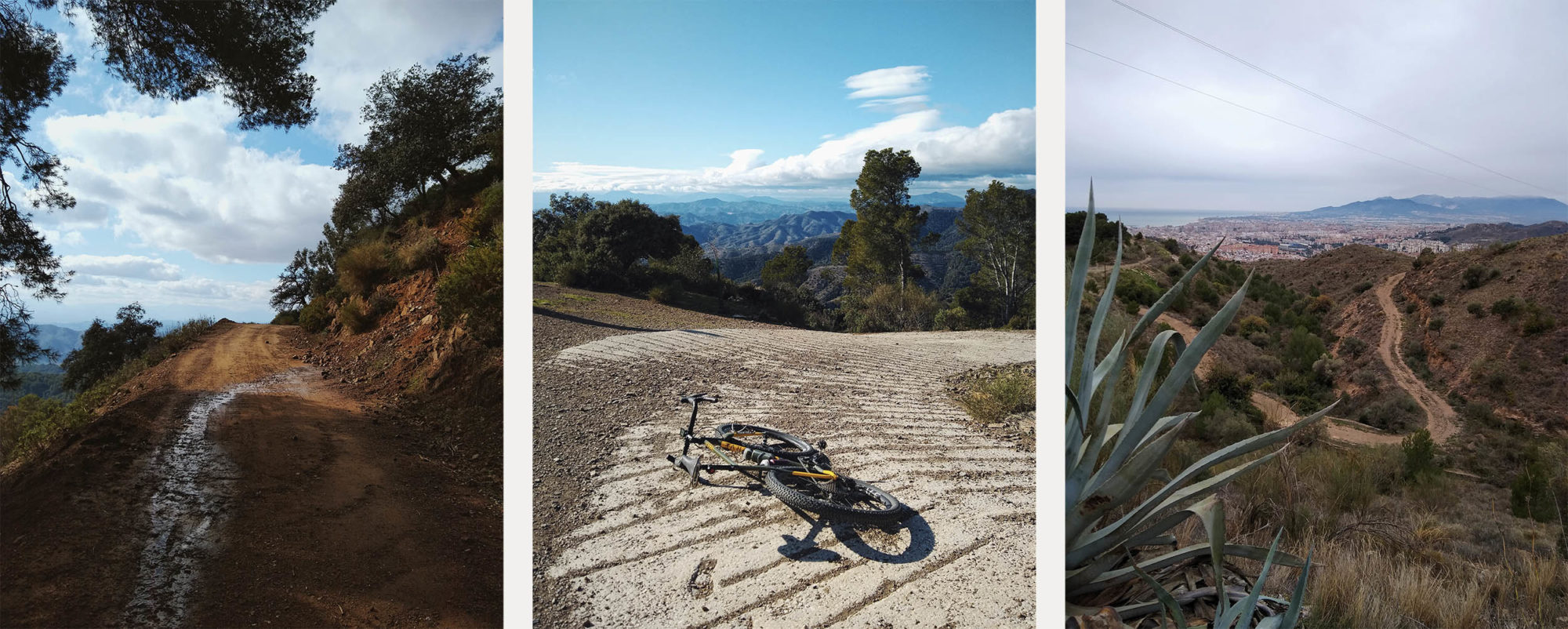
Despite the nearly unlimited options in the category these days, Curve’s Kevin of Steel was the first bike that came to mind as the ideal all-road rig to take on the Costa del Sol’s patchwork of sleepy paved byways, undulating gravel roads, and rocky two-track that I’d glimpsed on satellite imagery before landing in Málaga. I’d been itching for an opportunity to give the Kevin of Steel a proper ride ever since I took one for a short test spin around Melbourne while living there in 2018 (see my visit to Curve HQ). Unfortunately, Curve didn’t have any complete demo bikes in Europe available during my time in Málaga, but Jordan Addison from G!RO Cycles in Esher, UK—a Curve dealer and close partner since 2016—stepped in at the last minute and kindly offered to send his personal Kevin of Steel (affectionately known as Sgt. Steve) down to Spain.
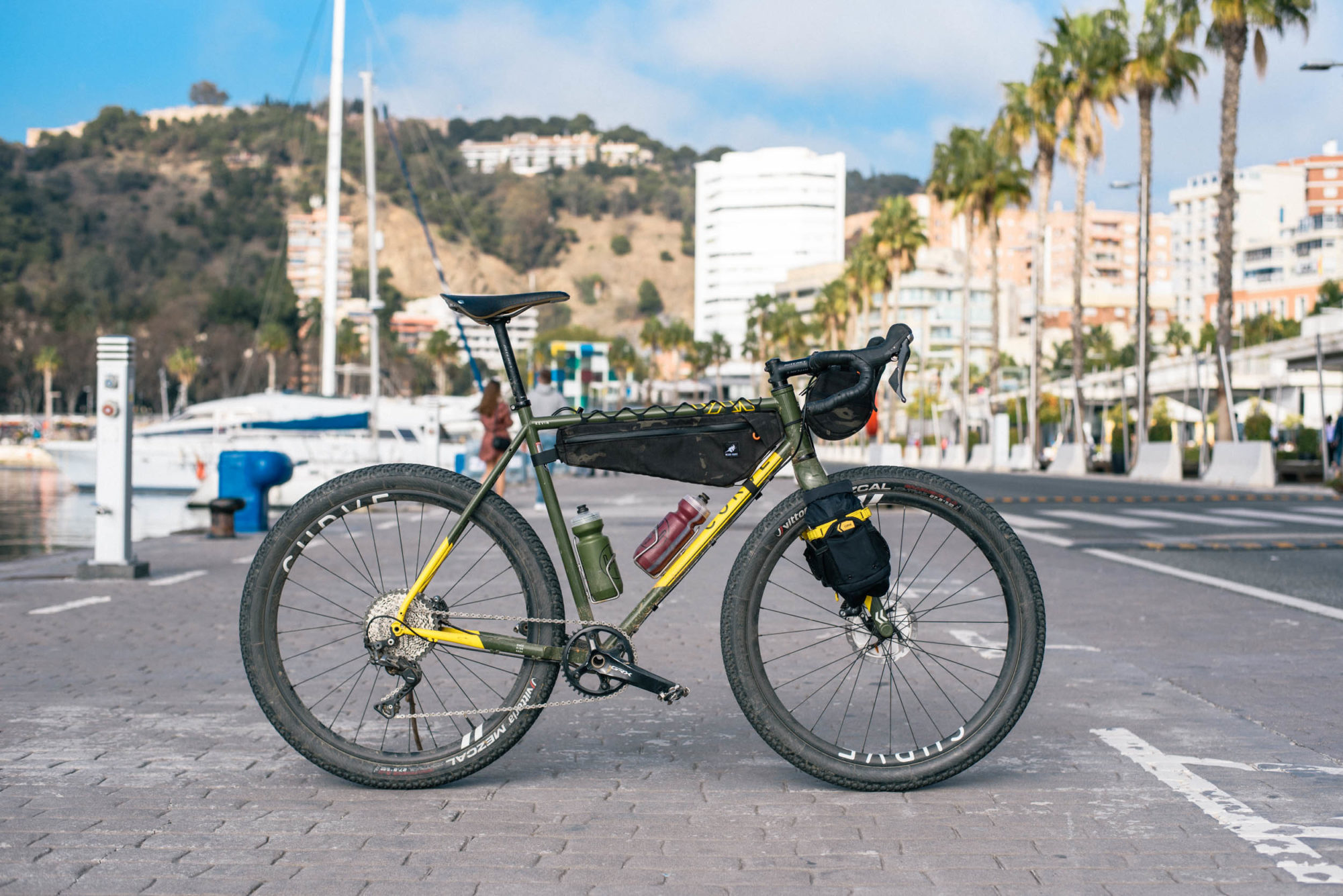
Over the course of about six weeks, I put in a bunch of miles on an assortment of different surfaces and conditions to get a sense of what the Kevin of Steel is all about for this full review.
A Bit About Curve
Before diving into my time with the Kevin of Steel, a quick introduction to Curve. The small Melbourne-based brand has released a number of noteworthy road, all-road, and off-road bikes (read our review of the GMX v1) in the eight years they’ve been around, as well as several impressive odds and ends. Their Walmer bars made quite a buzz when they were released last year, pushing the limits of how we define “wide” when talking about drop bars. Logan reviewed their carbon Dirt Hoops a little while back, and they also recently launched their Rocket Pooch fork bags and matching titanium cages. The Dirt Hoops and Rocket Pooches were both outfitted on my Kevin; find more on those later.
One thing that sets Curve’s bikes apart from those of their competitors is the truly insane amount of real world testing that goes into their products before they’re released. They’re pretty casual about it, but there are some serious riders at the helm of the company, who are often out riding and refining their models. Curve’s bikes are thoroughly tested in races and on rides through places such as the Australian Outback, Namibia, and Lesotho before being brought to market. I like knowing that Jesse Carlsson and Sarah Hammond have given a new model their seal of approval as I know they’re properly putting bikes through the paces in a way that will only ever be aspirational for most of us. In fact, I think that’s the very reason you’ll find relatively little marketing speak on Curve’s site—there’s plenty of real world documentation about what these bikes are actually capable of. That’s to say, I wouldn’t blame you if you decided not to listen to my nonsense and instead went to look at all the mind-boggling stuff the folks at Curve are doing with their Kevins.
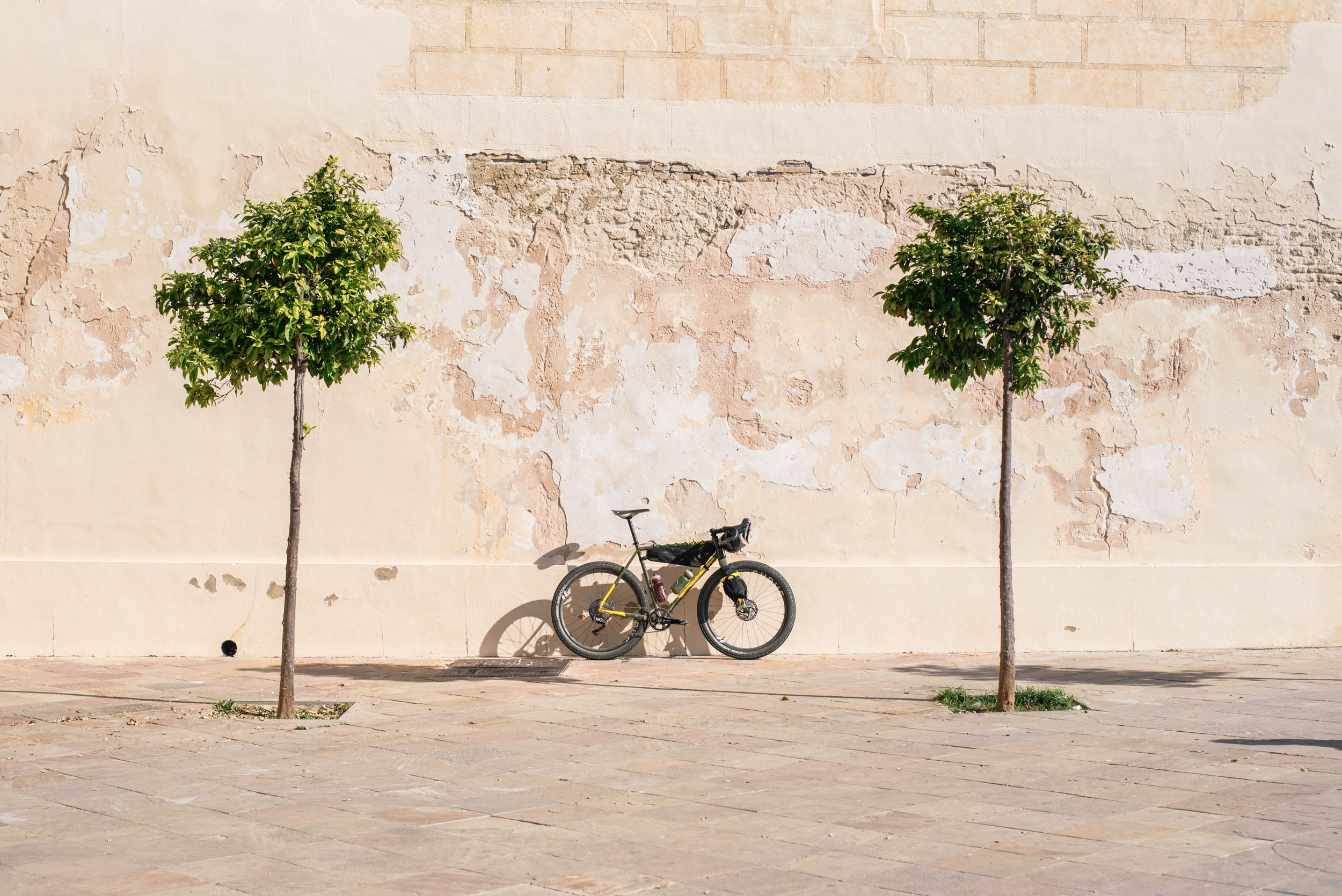
Kevin of Steel Overview
Curve’s Kevin of Steel is a gravel/all-road bike built from light and durable Columbus Zona steel tubing. It officially clears 650B x 2.2” or 700c x 45mm tires and packs in a lot of bikepacking-friendly features, such as rack, fender, and triple bottle mounts, fully external cable routing, and a T47 bottom bracket. Perhaps the most unique feature of the Kevin is its custom-machined chainstay yoke that increases tire clearance and helps maintain stiffness under load. It’ll fit 1x or 2x drivetrains. Depending on size—they range from XS to XL—Kevin frames weigh in at 4.8-5.2 pounds (2.2-2.4 kilograms). Based on the current exchange rate, a Kevin of Steel frameset costs right around $1,400 USD with frame, fork, headset, seatpost clamp, and axles.
- Highlights (Large)
- Frame/Fork: Columbus Zona Steel / Carbon
- Angles: 72° Headtube, 73° Seattube
- Reach/Stack: 394mm / 591mm
- BB Drop/Chainstay: 68mm/432mm
- Bottom Bracket: 68mm T47
- Hub specs: 12 x 100 (front) / 12 x 142 (rear)
- Seatpost Diameter: 27.2mm
- Max Tire Size: 27.5 x 2.2″ / 700c x 45mm”
The large Kevin of Steel has a 72° head tube angle, 73° seat tube angle, 432mm chainstays, a 68mm bottom bracket drop, 591mm of stack, and 394mm of reach. A quick look at the geometry chart shows that for its nominal size, the Kevin of Steel is relatively long and tall, with a high standover. Especially with its straight top tube in most sizes, it’s quite a tall bike. Curve opted for longer seat and top tubes to maximize space for frame bags and 1L water bottles, helping solve the persistent problem of how to cram all your stuff inside the main triangle when loading up for a bikepacking trip. Unless you’re a master of minimalist packing like Joe Cruz, odds are you’ll need and appreciate every last bit of room. Given the unusually long top tube, Curve designed Kevin with a shorter stem and wide drop bars in mind for optimal handling.
The full-carbon, flat-mount GXR Fork rounds out the Kevin frameset, which sports internal brake cable routing, two sets of three-pack mounts, and a drilled crown for mounting a dynamo light, fenders, or a minimal rack. It has a 51mm rake and an axle to crown of 400mm. The Seek version, as pictured here, weighs 535g and is rated to hold a modest 6.6 pounds (3 kilograms) per side. It’s stiff, strong, and has generous tire clearance—the Vittoria Mezcal 27.5 x 2.25s I had mounted fit with room to spare. As carbon forks go, this one’s a winner in my book, as I can’t think of anything else I’d ask it to do.
Kevin of… Titanium?
Curve hasn’t exactly done themselves any favors with their naming conventions, but something tells me they like it that way. I admit that it took me some time to figure out what’s what in their lineup, so here’s a bit of clarification. There are indeed two Kevins in their fleet. Well, kind of. Alongside the Kevin of Steel, there’s also the Kevin, sometimes known as the GXR, which is built from titanium instead. And those aren’t to be confused with the GMX or GMX+, Curve’s drop-bar 29er and 29+ models, respectively.
At $2,800 USD, the titanium Kevin (err, GXR) frameset is twice the price of its steel counterpart. It comes paired with the same GXR Fork and has identical geometry, though there are two additional sizes: XXS and XXL. Of course, the fact that it’s built from a different material means it’s a completely different bike worth discussing on its own, but we won’t get into that now. Suffice to say, look for a more in-depth feature on the titanium Kevin later this year.
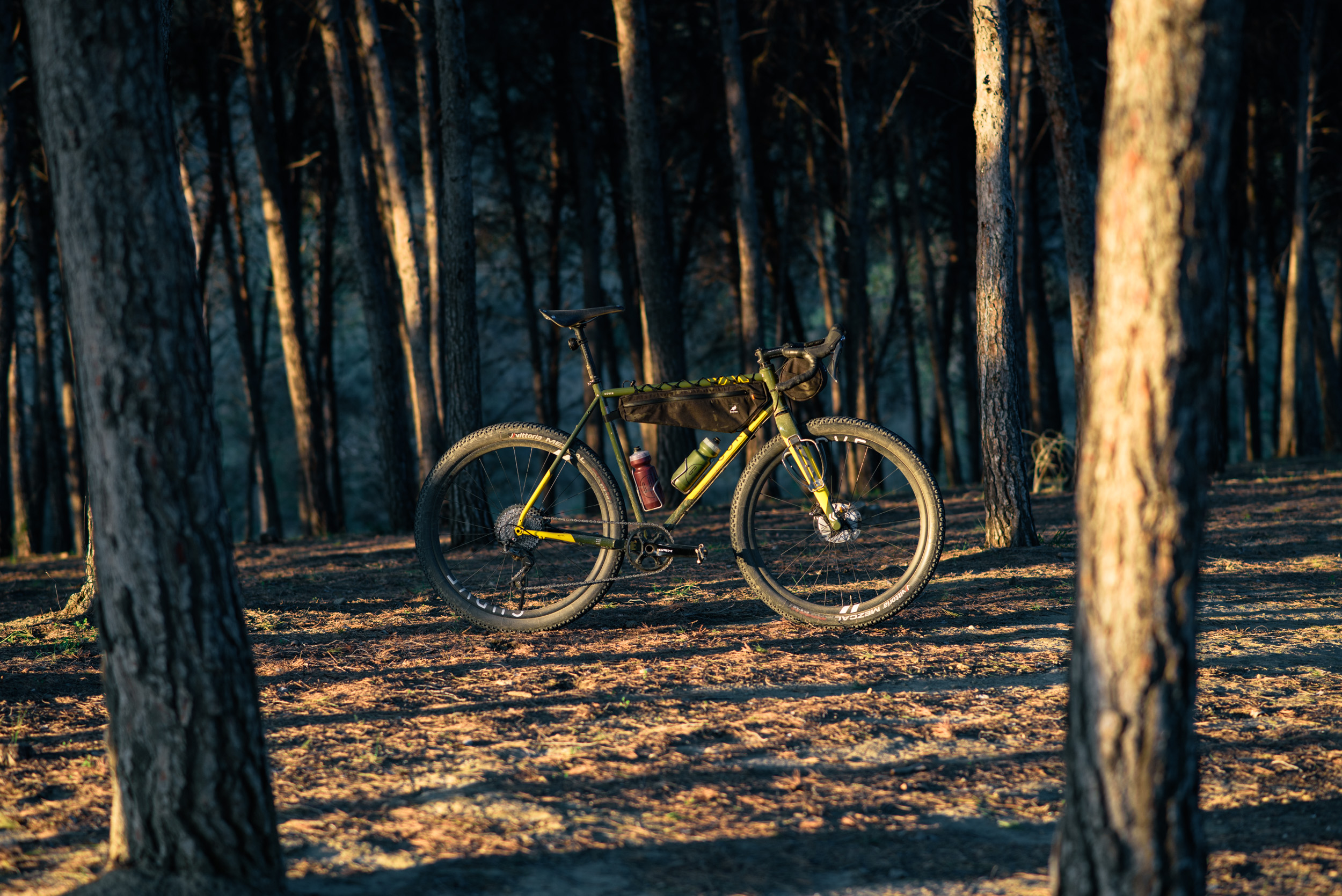

Initial Impressions
The second version of the Kevin of Steel was available in green/yellow (as pictured) and blue/yellow, whereas the updated Kevin of Steel III comes in a muted green or a bright blue. By now you’ll have gathered that I’m a fan of Curve, but admittedly I’ve never been too into any of their Kevin paint schemes. It grew on me over time, but it was anything but love at first sight. Conversely, this bike might have elicited more oohs and aahs from onlookers and other cyclists than anything else I’ve ridden, so probably it’s just me. Color preferences aside, it’s undoubtedly a badass looking bike that really grabs attention with its skinny tubes and fat tires. Needless to say, I was immediately excited to take it out for a proper ride when I picked it up from the shop in Málaga.
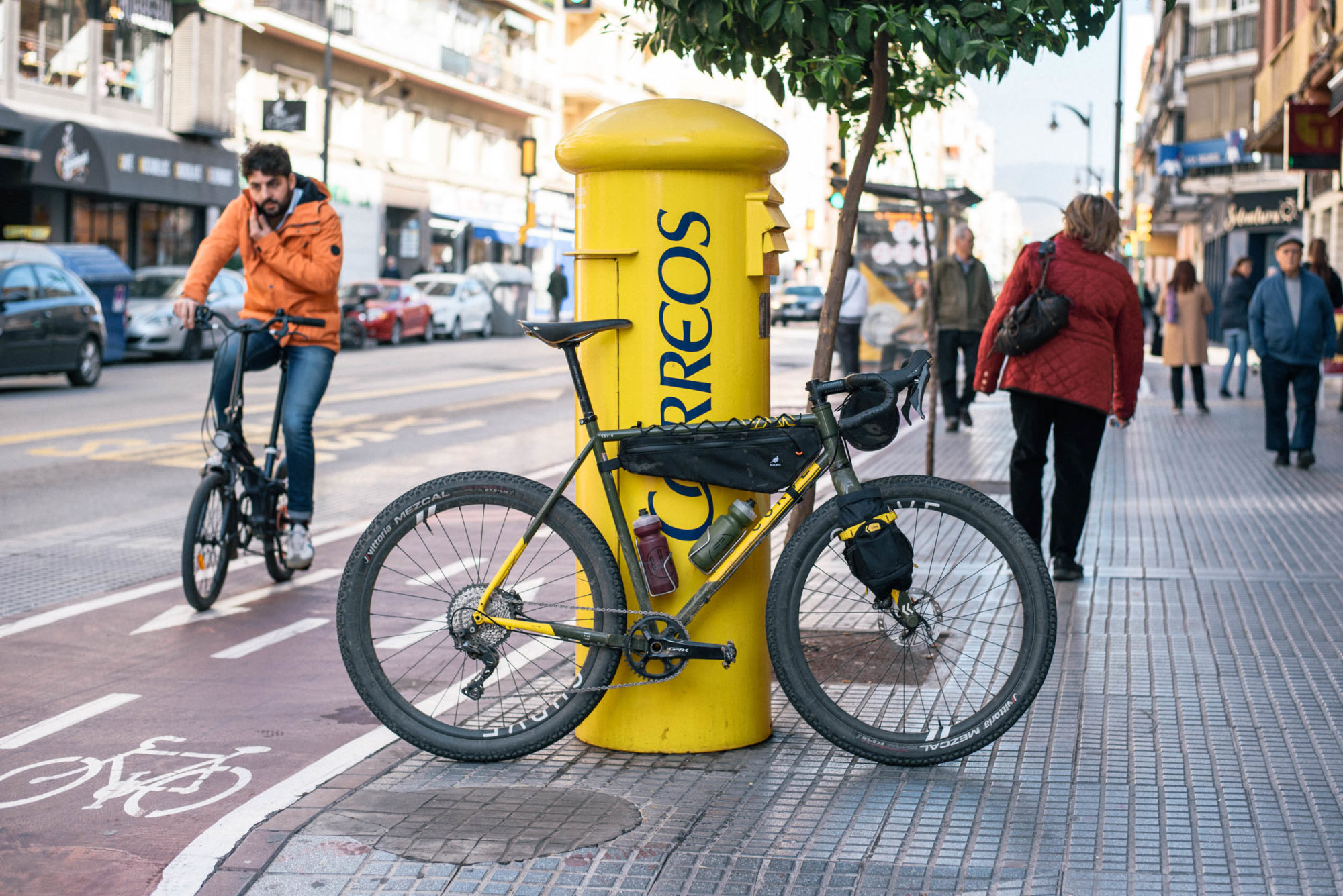
Jordan sent his complete bike down exactly as he’d been riding it, which mostly worked for me. I’ve written elsewhere about how much I like Shimano’s GRX groupset, so I was happy to see that specced. If I could do it again, I’d have swapped out the 40T chainring for a 38T as most dirt rides that launch from Málaga involve a respectable amount of climbing, occasionally on pretty loose stuff. The Ritchey WCS Venturemax handlebars were a standout for me, and I liked them enough that I recently picked up a pair to put on my new all-road rig. The Curve Dirt Hoops with DT Swiss 350 hubs and 27.5 x 2.25” Vittoria Mezcal tires were flawless from the first time I veered off pavement. In fact, I’m sure they were a key ingredient in why I had such a blast riding the Kevin on rocky tracks that I’d sometimes be inclined to skip. Come to think of it, Curve nailed it with their description: “Kevin fears nothing and will take you places you didn’t even know you wanted to go.”
At 6’3” and with long limbs, an XL would have been ideal, but I was still able to get Jordan’s size Large dialed in comfortably, even if it meant having a sky-scraping seatpost (that someone will almost certainly leave comment about).
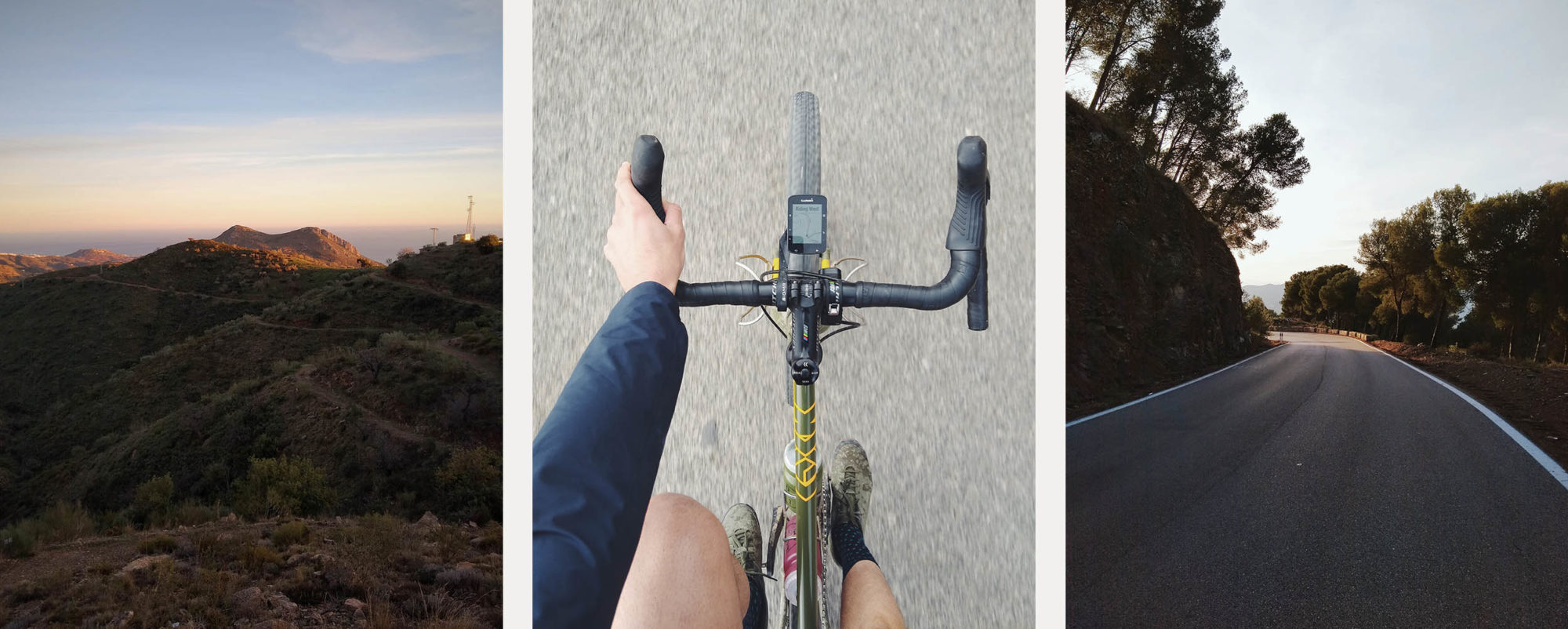
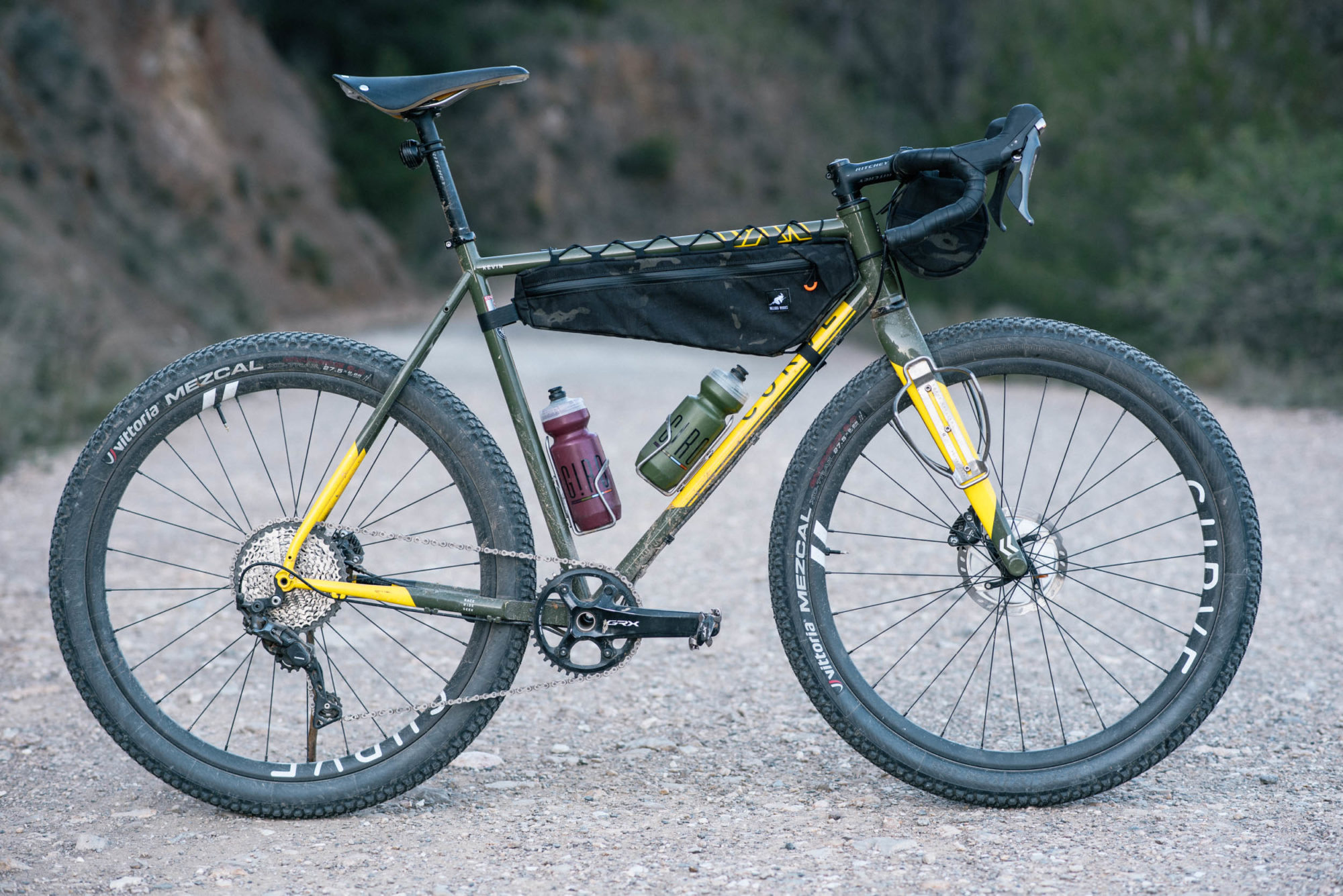
Bikepacking with Kev
From punchy climbs up mountain tracks, to haphazard route finding between remote white towns tucked into the hills, to carefree cruises along the Mediterranean coast punctuated by cold beers and plates of tapas, southern Spain was a dreamy proving ground for the Kevin of Steel in dirt-seeking mode, loaded up with bags. And as it was the only bike available to me, it ended up needing to be more than that. Brawny 2.25” tires be damned, it was also my road bike—turns out there’s a lot of great road riding around Málaga, too. Commuting around the city on the Kevin added some fun and made dirt detours and cobblestone segments a part of my daily routine.
Many of the bikes I’ve reviewed on this site are positioned as “Swiss Army knives” or do-it-all bikes. Based on my experiences, I’d say it’s true that most of those bikes can cover their share of bases, but I felt better and more confident on the Kevin of Steel than on pretty much any other drop-bar gravel bike I’ve ridden at length in the past couple of years, which is saying something. No doubt, the exceptionally chunky 650B wheels and tires played a huge role here, but Curve deserves credit for their commitment to tweaking and refining the Kevin/GXR into the platform it is today. Although it evolved from a cyclocross bike—the Grovel, which Curve iteratively updated out of existence by expanding tire clearance, adjusting the geometry, etc., until it became something else entirely—it doesn’t feel like a race bike. No doubt, plenty of folks have used it in race mode, but when all its features are taken together, its more than that.
As a bikepacking rig, the Kevin of Steel’s fairly neutral geometry makes it comfortable for long days of pedaling and its moderate chainstay length makes it stable but not the least bit sluggish. It responds well to handling input on winding, fast downhill trails, and also makes for an easy place to sit and soak in the views on hours-long climbs and gentler grades. Although I only have my own riding style as a reference point, I think this bike is exceptionally well-suited to being whatever kind of all-road rig you want it to be, whether that means getting into the really chunky stuff or just riding along on hardpacked gravel. Most all-road bikes are striving for this versatility; the Kevin of Steel actually seems to achieve it.
Despite my positive impressions of the Kevin and the Dirt Hoops after six weeks of daily riding, I’m less inclined to go out and buy their Rocket Pooch fork bags. While the titanium cages are beautiful and the clever bag attachment system is ultra secure, the hefty $279 price for a pair of two bags and two cages is enough to make me pause to consider exactly how I want to configure my bikepacking bag setup. They’re also relatively heavy when compared to something like a simple dry bag of comparable size, but without the versatility, since they only work together as a system. All that said, they do what they’re designed to do extremely well, but I’m not fully convinced that I enjoy carrying my gear in fork-mounted bags, regardless.
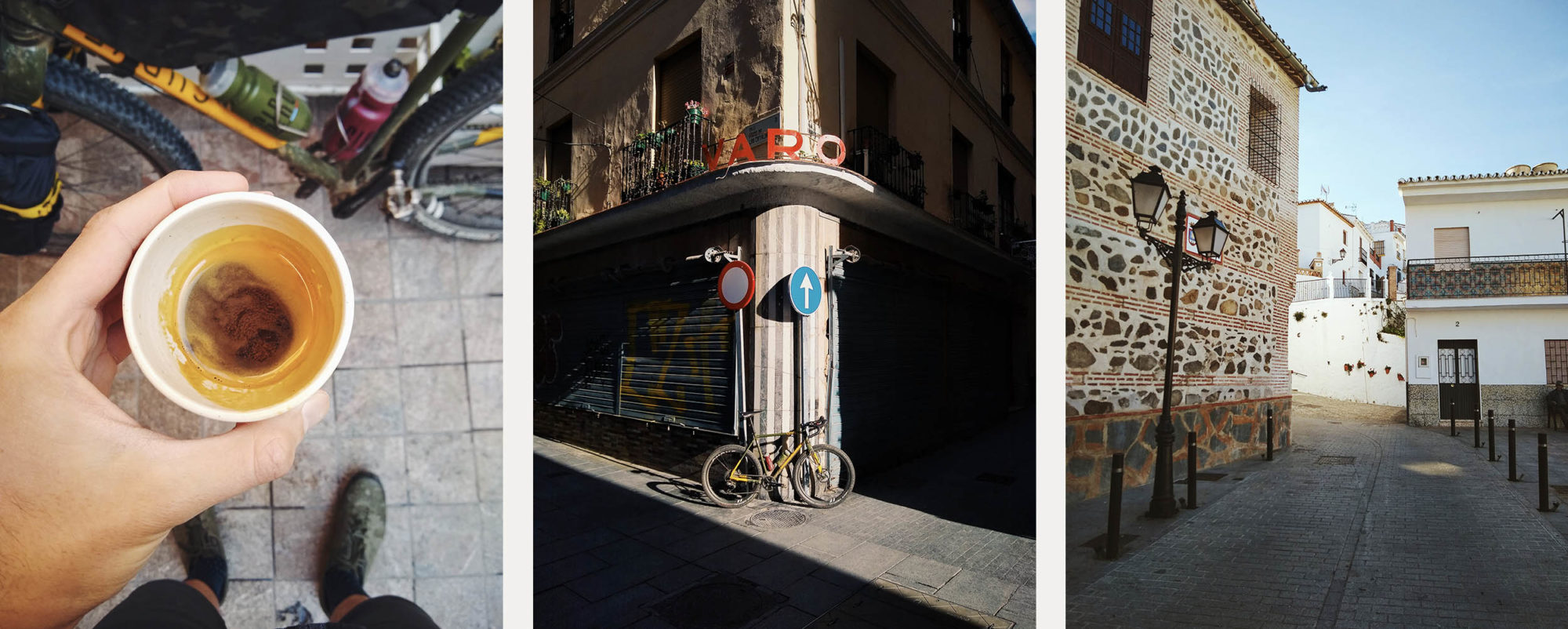
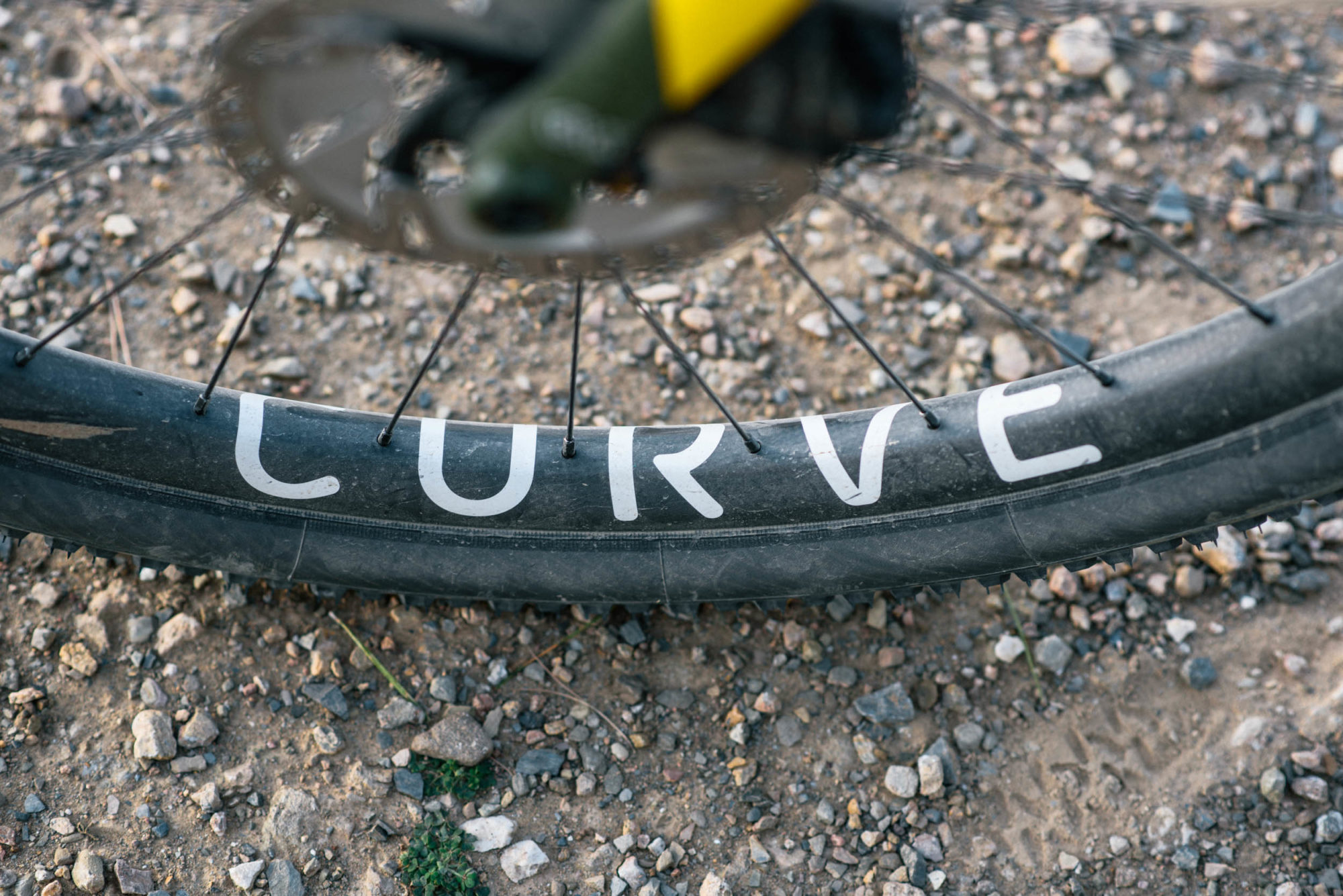
Version III Updates
As mentioned above, the bike I test rode was a second-generation Kevin of Steel, which has since seen some updates. In addition to the fresh paint schemes, the newer Kevin of Steel III features a sloping top tube on the small and extra small sizes for added standover clearance, as well as lower water bottle mounts to make additional room for frame bags. Nothing major this time around, but it’ll be interesting to see what changes version IV brings, especially with more and more riders continuing to push the limits of what can reasonably be expected from a bike such as this.
Build Kit
As mentioned earlier, this bike came to me as Jordan from G!RO Cycles built it up for his own use. If I’d had the opportunity to build up a Kevin from a frameset, there are a number of different components I’d have liked to experiment with, but it was great to experience Jordan’s vision of what a Kevin should be. I added my trusty (and seemingly indestructible) Shimano XT pedals and Brooks Cambium C17 saddle, and to complete the kit, I picked up a Lil’ Presto handlebar bag from my friends Harry and V of Wizard Works in London, who also loaned me a lace-up frame bag they had on hand. My Porcelain Rocket Mr. Fusion V2 seatpack came along to Spain as well, as did my Acre Hauser 14L backpack.
Curve offers two complete builds (650B or 700C) for the Kevin of Steel, but not to these specifications. There are several different configurations available for the titanium Kevin, and hopefully some of those options will trickle over to the next steel version. Find the full build kit for the Kevin of Steel (as ridden in Spain) below.
- Frame Curve Kevin of Steel II (Large)
- Fork Curve GXR (Seek)
- Rims Curve Dirt Hoops
- Hubs DT Swiss 350
- Tires Vittoria Mezcal 27.5 x 2.25″
- Headset Curve
- Stem Ritchey WCS
- Handlebar Ritchey WCS Venturemax
- Seatpost Ritchey WCS
- Brake/Shift Levers Shimano GRX
- Rotors Shimano Ultegra
- Crankset Shimano GRX
- Pedals Shimano XT
- Derailleur Shimano GRX
- Saddle Brooks Cambium C17
- Frame Bag Wizard Works
- Handlebar Bag Wizard Works Lil Presto!
- Accessory Bags Curve Rocket Pooch fork bags (with Ti cages)

Price and Availability
Curve has the Kevin of Steel produced in small batches using a pre-order model to boost the numbers for each run, so availability can be extremely limited. As of right now, only medium, large, and extra large Kevin of Steel III framesets/completes are in stock directly from Curve, but based on the Kevin’s success to date, we anticipate an updated fourth version to follow. You may also be able to find one from a dealer, such as G!RO Cycles in the UK or The Gentle Jaunt in Berlin (both highly recommended). Current pricing is $1,400 USD for a frameset, with complete 650B or 700C SRAM Rival 1 builds coming in around $3,100.
Pros
- Incredibly versatile platform
- Ridiculous real world testing goes into every Curve product
- GXR Fork stands out in a crowded marketplace
Cons
- Limited availability depending on size
- Standover clearance may be an issue for smaller riders
- Bold color schemes aren’t for everyone
- Frameset Curve Kevin of Steel + Curve GXR fork
- Actual Weight 5.07 pounds (2.3 kg)
- Place of Manufacture Taiwan (frame) / China (fork)
- Price $1,400 (frameset)
- Manufacturer’s Details CurveCycling.com.au
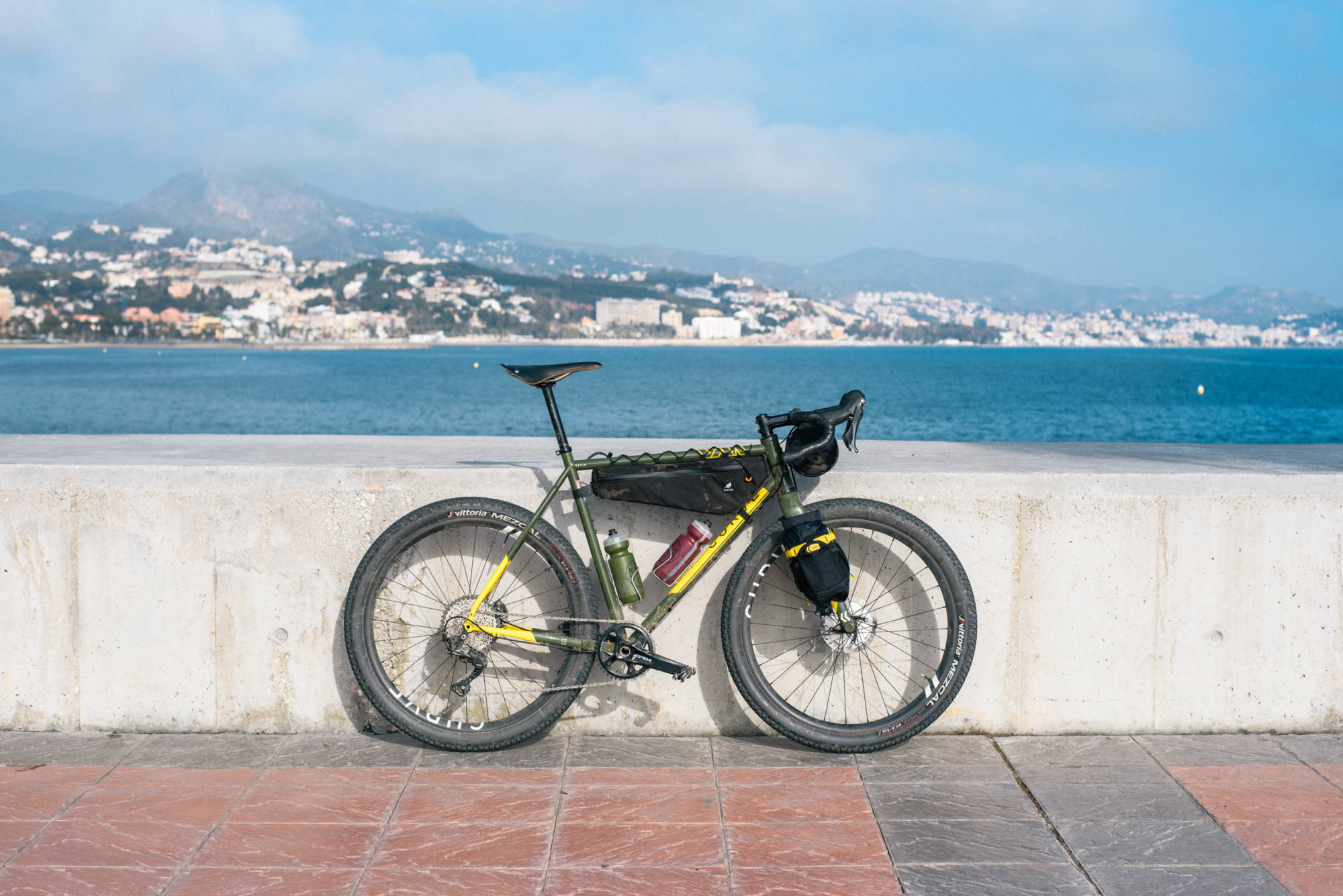
Wrap Up
As production bikes go, Curve’s Kevin of Steel probably exemplifies my hyper-specific niche cycling interests better than anything else I’ve come across to date. We talk a lot about how most bikes don’t quite tick all the proverbial boxes around here, but I think, for me, this one might. If I had to own just one bike, the Kevin of Steel would be right up there atop the list of contenders.
At $1,400 USD for a high-quality Zona steel frame and full carbon fork, with all-day geometry, massive tire clearance, no-fuss cable routing, a T47 bottom bracket, and a lot of mounts throughout, I think the Kevin of Steel has plenty of pull factors for road cyclists and mountain bikers alike who are looking to cross over into the world of gravel/all-road riding, regardless of whether that means 700 x 35mm ultra-endurance racing or 650B party mode.
The fact that Curve is a small team of around half a dozen passionate people who are out there racing, riding, and contributing to the community—all the while continuing to take risks and push the envelope of what adventure-focused bikes can do—is all the more reason to take a closer look.
Please keep the conversation civil, constructive, and inclusive, or your comment will be removed.







